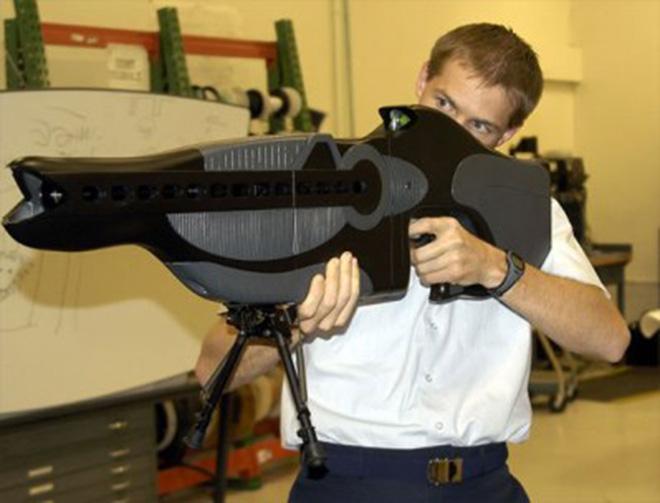Table of Contents
- Legal Restrictions and Cruise Line Policies on Stun Guns
- Safety Concerns and the Rationale Behind Prohibitions
- How to Securely Transport Self-Defense Devices on Board
- Tips for Choosing Approved Personal Safety Alternatives on Cruises
- Wrapping Up
Legal Restrictions and Cruise Line Policies on Stun Guns
Cruise lines maintain stringent security protocols that often directly impact what personal items passengers can bring on board. Most major cruise operators explicitly prohibit the possession of stun guns due to safety concerns and the potential for misuse in a confined environment. These policies are not only reflective of company rules but also align with international maritime laws and port regulations, which frequently ban such weapons to ensure passenger and crew safety. Before embarking, travelers should thoroughly review the cruise line’s official prohibited items list to avoid confiscation or denied boarding.
Key points to consider include:
- Legal Complexity: Stun guns may be legal in a passenger’s home state or country but illegal to carry on board, as maritime law and the laws of various ports take precedence during the cruise.
- Security Screenings: Enhanced screening procedures at embarkation often detect prohibited items, with stun guns being a common item confiscated.
- Consequences: Violating these policies can result in penalties ranging from loss of the device and warnings to disembarkation without refund.
Safety Concerns and the Rationale Behind Prohibitions
Cruise ships are essentially floating cities, designed to ensure the safety and comfort of thousands of passengers and crew members. The decision to prohibit stun guns stems primarily from the potential hazards these devices can pose in such confined and crowded environments. Unlike personal defense scenarios on land, where one can maintain distance and control, on a cruise ship, a stun gun’s discharge could trigger panic, accidental injury, or unintended damage to sensitive electronic systems critical for navigation and communication. This risk, combined with limited emergency response capabilities at sea, necessitates restrictions to maintain overall vessel security.
Additionally, cruise lines implement strict safety policies that take into account a wide range of factors, including legal regulations across various jurisdictions the ship travels through. These policies often prohibit weapons and items that might compromise onboard safety, such as:
- Stun guns and other electric shock devices
- Firearms and ammunition
- Sharp objects beyond personal grooming tools
How to Securely Transport Self-Defense Devices on Board
When planning to bring self-defense devices such as stun guns on a cruise, meticulous preparation is crucial to ensure compliance with maritime security protocols. Typically, these items are considered restricted or prohibited on many cruise lines due to safety concerns. If permitted, they must be securely packed in your checked luggage rather than carry-on bags, and clearly declared during the embarkation process. This approach not only adheres to cruise line policies but also helps avoid unnecessary delays or confiscations at the security checkpoint.
To efficiently manage transportation, consider the following steps before boarding:
- Consult the specific cruise line’s policy: Each cruise operator may have distinct rules regarding self-defense devices, so reviewing their guidelines ahead of time is essential.
- Use manufacturer-approved lockable cases: Encasing your device in a secure, tamper-proof container protects it and demonstrates responsible handling to security officers.
- Keep documentation handy: Carry proof of purchase and any relevant permits to substantiate lawful ownership.
- Avoid hidden compartments: Concealing defense items can raise red flags and complicate security clearances.
By following these best practices, you ensure a smoother boarding experience and respect the safety standards set for all passengers on board.
Tips for Choosing Approved Personal Safety Alternatives on Cruises
When selecting personal safety devices for your cruise, it’s essential to prioritize items that complement the ship’s strict security policies. Instead of stun guns-which are typically prohibited-consider alternatives like personal alarms or pepper sprays, provided they meet the cruise line’s regulations. Always review the cruise operator’s official list of permitted items before packing. This ensures your chosen safety tools don’t cause delays at boarding or confiscation onboard. Additionally, opting for non-lethal and low-profile devices can provide peace of mind without raising red flags with security personnel.
Keep these guidelines in mind when making your choice:
- Check size and functionality to adhere to cruise line restrictions
- Verify the device does not contain prohibited chemicals or components
- Favor easily accessible, lightweight options for practical in-crowd usability
- Always pack items securely and declare them if required during boarding
By doing thorough research ahead of time and selecting approved, effective personal safety alternatives, you can enjoy your voyage with confidence and compliance, keeping safety a priority without compromising the cruise experience.
Wrapping Up
In summary, while stun guns may offer a sense of personal security, their presence on cruise ships is typically restricted or outright prohibited due to strict safety regulations and policies. Before packing any self-defense device, it’s essential to thoroughly review your specific cruise line’s rules and local laws to avoid confiscation or other complications. Staying informed and prepared ensures your voyage remains enjoyable and worry-free-because peace of mind on the open seas starts with understanding what you can and cannot bring aboard. Safe travels!Check Our Other Blogs
- StunGun – Your Trusted Source for Stun Guns, Laws, and Self-Defense Tips
- PepperSprayLaws – Your Trusted Resource for Pepper Spray Information
- StunGunLaws – Your Trusted Guide to Stun Gun Legality and Safety





